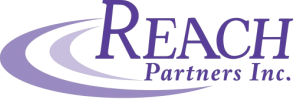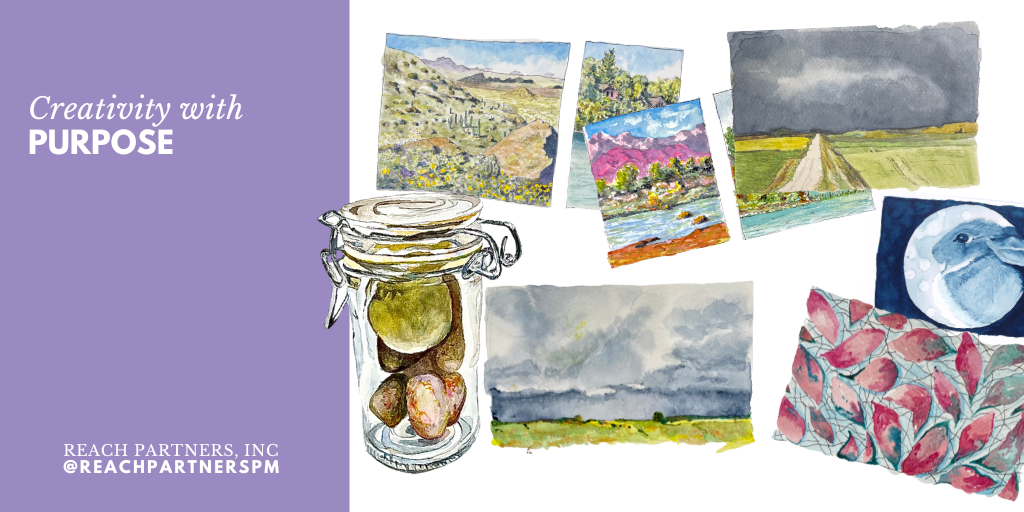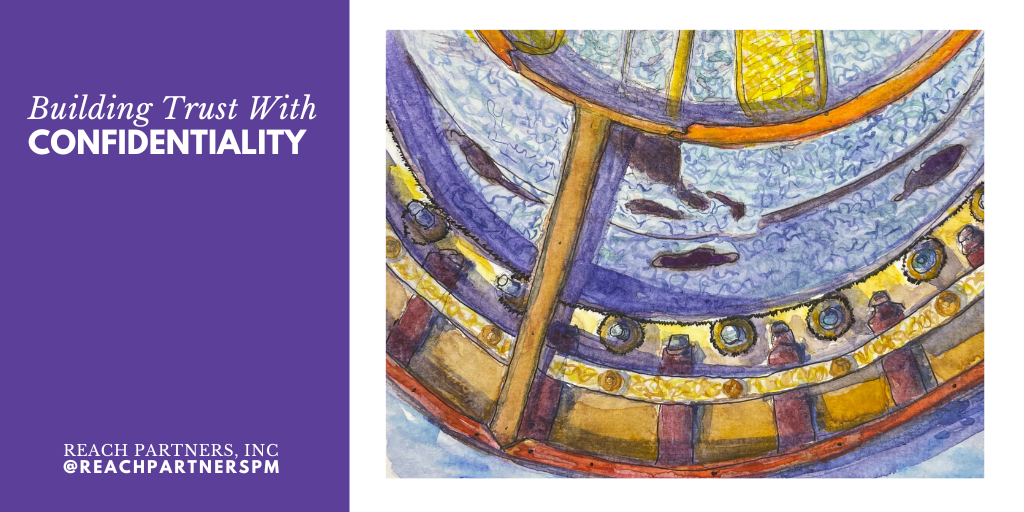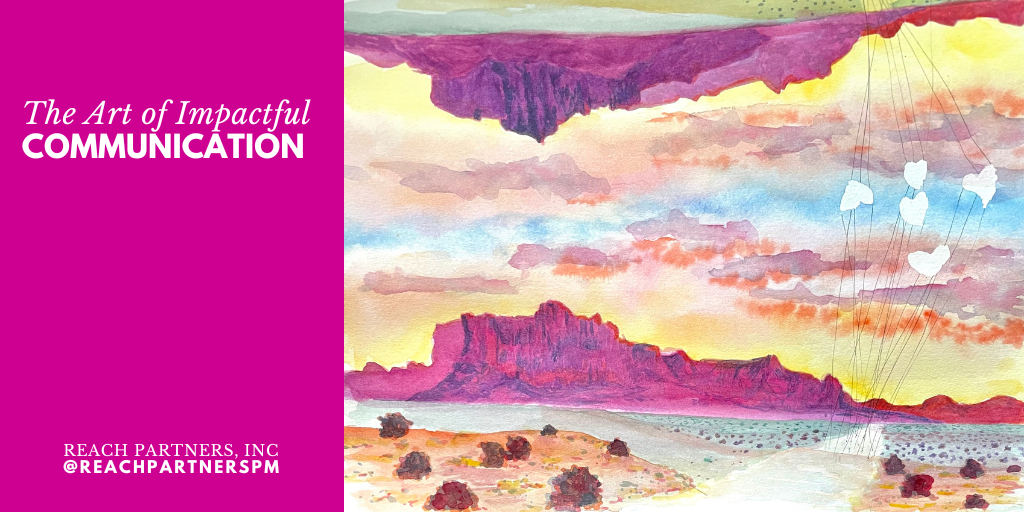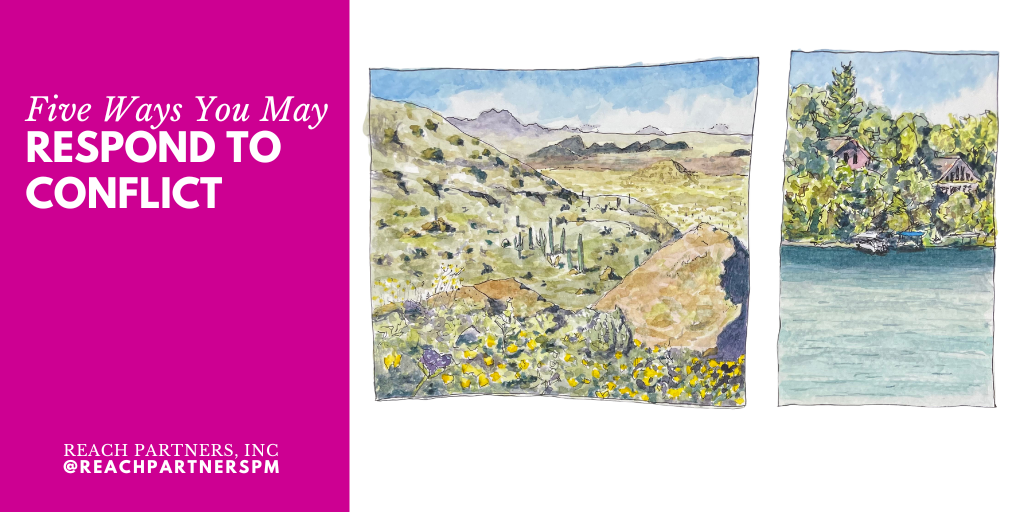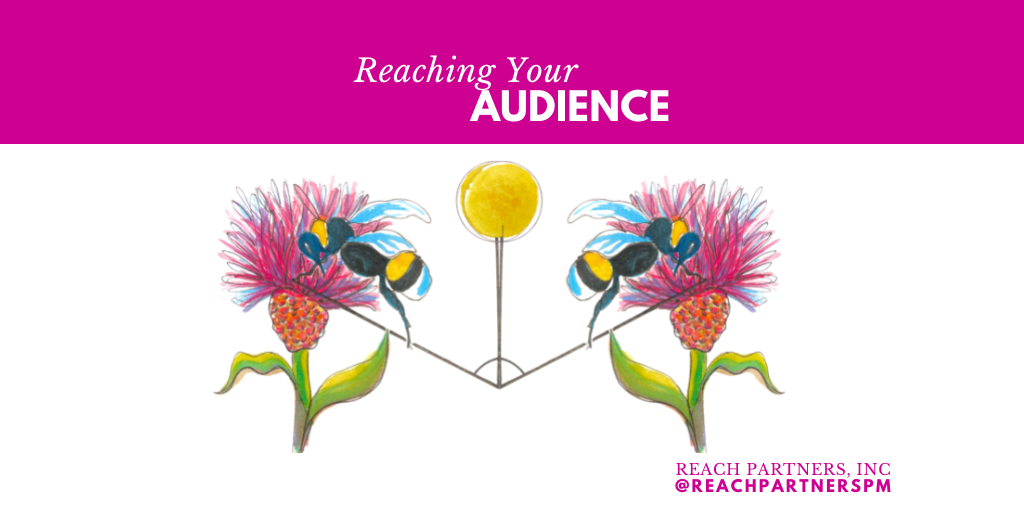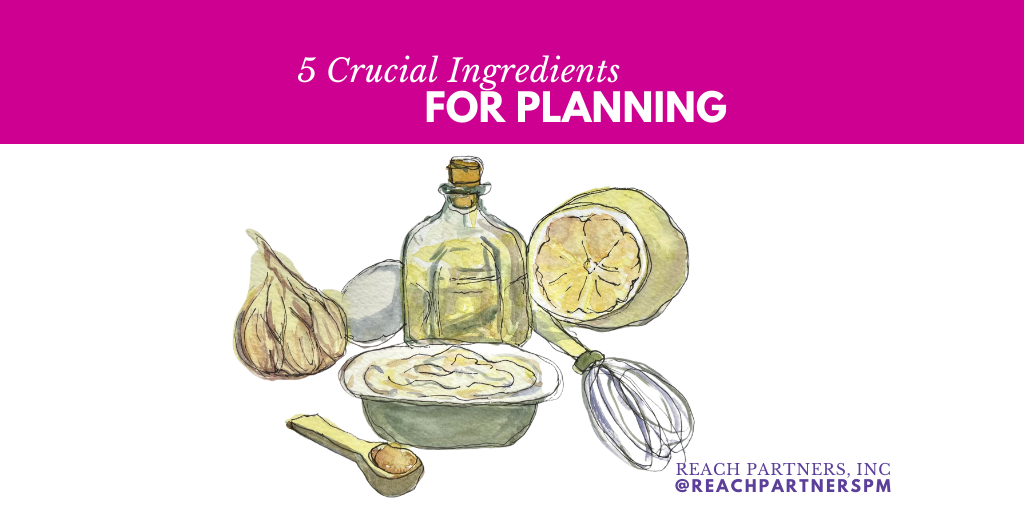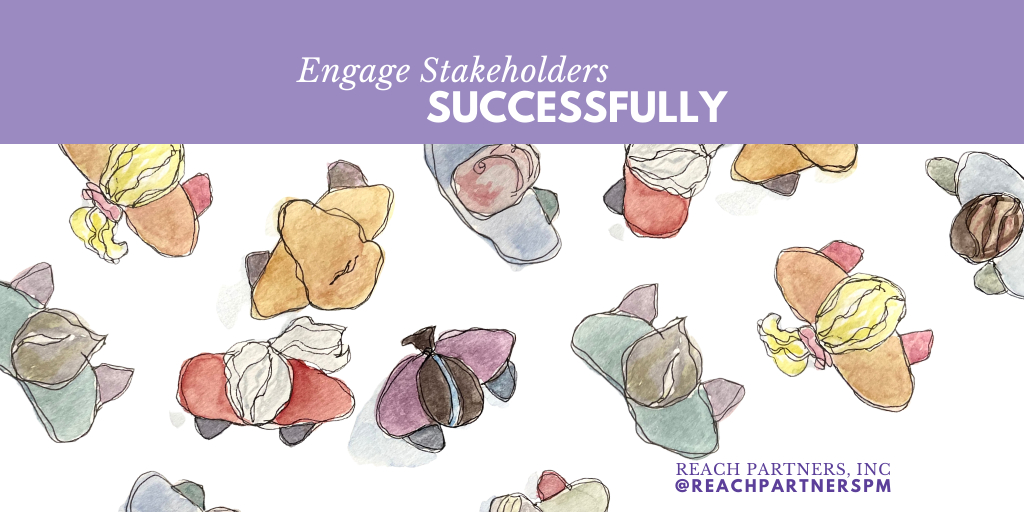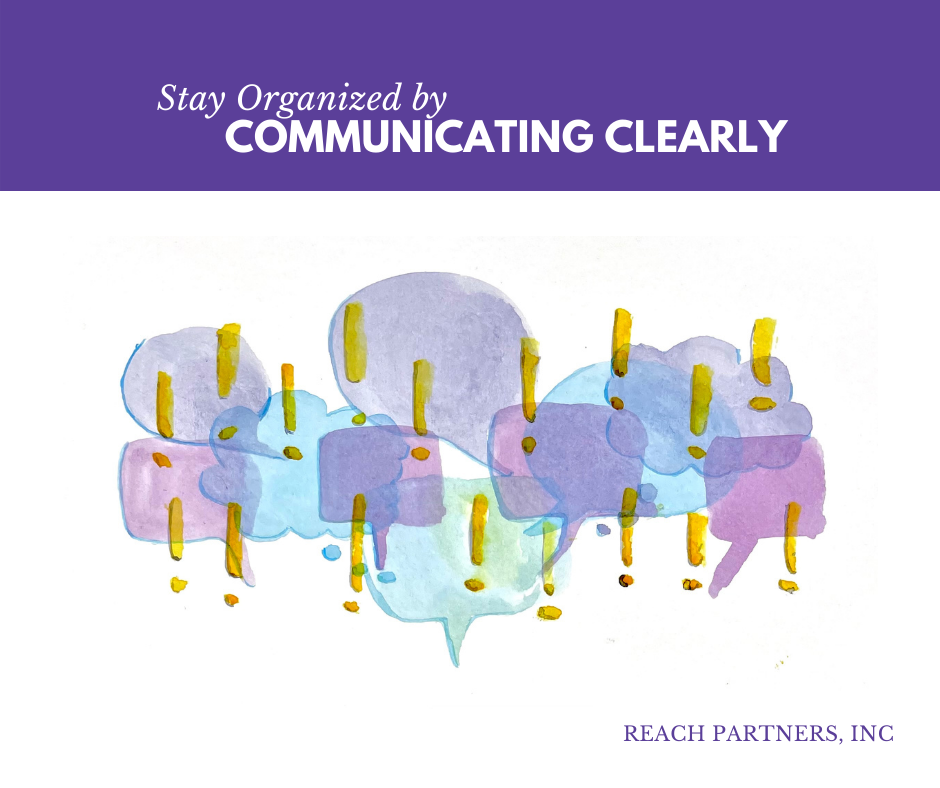|
Whenever two or more people meet in an office, conference room, or workspace, issues may arise. After all, differing opinions are a side effect of being human.
To prevent something small from shifting into a serious problem, we’ve learned at Reach Partners that open discussion can benefit the productivity of our team. Addressing small and large matters early on can lead to a healthier organizational culture. As much as we like each other, Anita and I acknowledge and accept we’ll have challenges working together. To address these, we keep “issues” as a weekly agenda item at our staff meetings. By giving ourselves a consistent time and place for the conversation, we can prepare for dialogue instead of argument. This allows us to focus our work time on client projects instead of stewing over issues. It is one way we value each other, deflate disagreements, and take action to move forward.
0 Comments
I started running just before I turned 30. After realizing I had never completed a consecutive mile, I wanted to see if I could reduce the amount I sweat (my cooling system is a slick thing to be admired) and transform into a long-legged, running gazelle (nope).
Still, what I have discovered after years of trotting is there are similarities between running a race (like a half marathon, 13.1 miles) and the project management work I do at Reach Partners (everyday, baby). For both, success starts by committing to do what I say I’ll do. Every month you are invited to welcome our newsletter into your inbox.
What you may not fully appreciate is that we carefully choose what to share with you. For us, each newsletter is an opportunity to deepen relationships with our clients and readers. We view it as a conversation, an opportunity for us to learn together. Each month we draft one new blog post and choose additional content that we think might be valuable to you. We also publish because it encourages us to process and learn from the projects we are working on or completed. Writing about lessons gleaned from our work makes our newsletter more meaningful and purposeful. We want to give you a chance to learn from our experiences. This feels more authentic than writing about a random topic. We share our observations and ideas in the spirit of improving together. Our knowledge grows deeper when you, our readers, offer your own insights on the subject. There is connection as we learn together. We recently decided to update our client testimonials and debated whether omitting a client name made the testimonial useful. The discussion was particularly valuable because it led to a deeper dialogue about the link between confidentiality and trust.
Trust is the basis of all successful relationships. Among the various elements that foster trust, confidentiality stands out as a crucial component, especially when partnered with integrity. Our commitment to respecting client confidentiality isn't just a box we check off — it's the cornerstone of how we build and maintain strong relationships. There are moments when something as mundane as a well-crafted email evokes awe. Call me a communication nerd, but I'm on a daily quest to master this art.
A beautifully composed email with a simple layout? Delivered in advance, and it’s structured with information in order of importance? That's my kind of joy. I appreciate it when someone invests time and resources to plan their communications. You can tell when they do. They bundle messages and write one email, not two or three. They organize information, prioritizing my attention and action over their convenience. Best of all, they strategically exclude information that doesn’t pertain to me. How do you typically respond to conflict?
This may not be a question we are comfortable answering, but understanding the primary way you respond to conflict can help you become more aware of your tendencies. It also can help you make better choices when you don’t agree with someone. Whether it's a disagreement with a colleague at work, a misunderstanding with a friend, or a difference of opinion within family, conflicts are a natural and inevitable part of human interaction. How we handle them significantly impacts our relationships and overall well-being. We talk a lot about communication. Mostly because it’s hard to do well, and it helps to keep stakeholders on the same page. But there’s something else that motivates us. Identifying the audience is one of the biggest challenges we face in communicating well. Who needs to hear a message? What do they need to know? When do they need to know it? Communication influences how an audience perceives a project or event. How and when you present a message is as important as the words or images you choose to share. Apply empathy and take time to figure out what your audience needs to know. All it takes are five simple ingredients to add creamy flavor to fried potatoes and punch to baked salmon. Those same five ingredients can serve as a base for a scrummy potato salad and the unsung heroes of a BLT sandwich.
When you combine garlic, mustard, egg, oil and lemon, you get an unforgettable garlicky mayonnaise, also known as aioli. Those individual ingredients are certainly tasty, but they become magical when combined. By slowly adding oil while whipping the other ingredients, the liquids emulsify and create a custard-like spread. Yum! Like mayo, the ingredients for a planning process are simple. Yet they form something new when combined. When blended, purpose, people, time, communication, and action become key ingredients to projects, events and collaborations we deem successful. We know that projects take time and effort. We expect to spend hours on project timelines, project budgets, and project deliverables whether we’re planning an event, constructing a building, or installing public art.
At Reach Partners, we do this well. We are, after all, project managers. That said, the term “project management” doesn’t completely describe our work. Every project we do involves or affects people. After all, without their input and responses, our projects are meaningless. An event doesn’t happen without presenters, attendees, organizers, and vendors. Buildings aren’t constructed without engineers, architects, funders, and those who occupy its spaces. And public art without an artist and viewers? Well . . . Truth be told, project management is as much about people management and relationship building as it is about shuffling plans, timelines, and budgets. We spend a considerable amount of our time working with stakeholders and keeping them engaged in the work.
As project managers, Anita and I have a reputation for being super organized.
Once upon a time a friend even introduced me as “super organized, down to the minute.” The way she said it made it seem as though it was my super power, a skill set I was granted at birth and now sprinkled upon every project I managed. I’m not going to lie, those words certainly warmed my project-manager heart. But, something gets lost when we look at “being organized” as a skill in and of itself. Because here’s the deal: I’m only super organized because I communicate clearly or at least try to. Being organized means nothing if one can’t communicate what’s needed and what’s happening to themselves and to someone else. |
Reach PartnersYour partners in leadership. Categories
All
Archives
July 2024
|
|
|
Reach Partners, Inc
3330 Fiechtner Dr. Suite 100 Fargo, ND 58103-2321 701-271-8170 Copyright (C) 2024 Reach Partners Inc.
|
